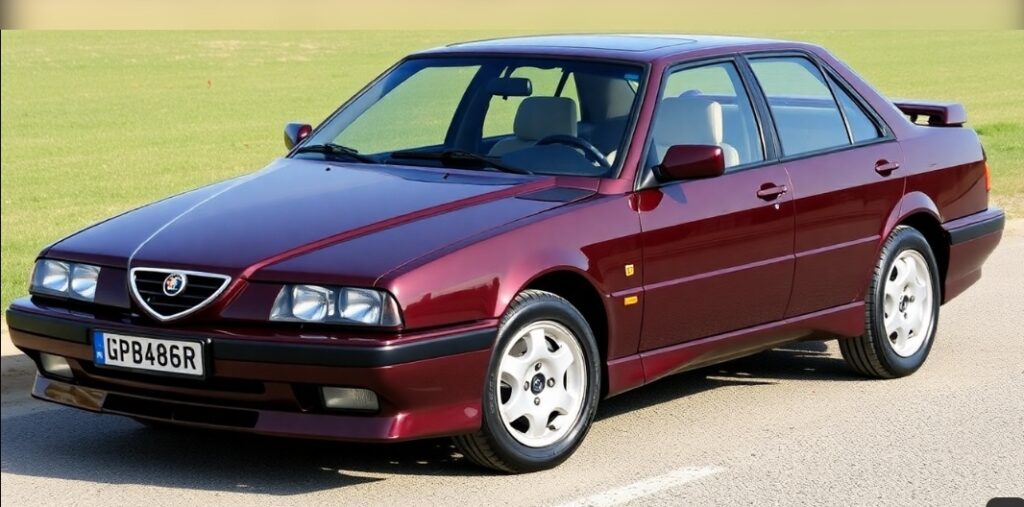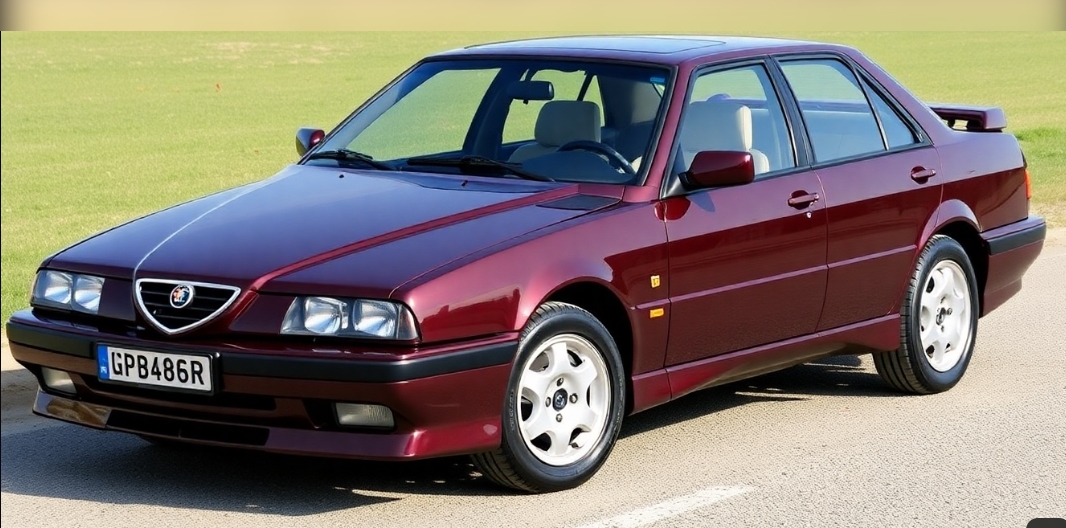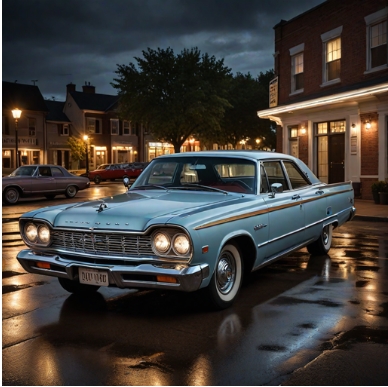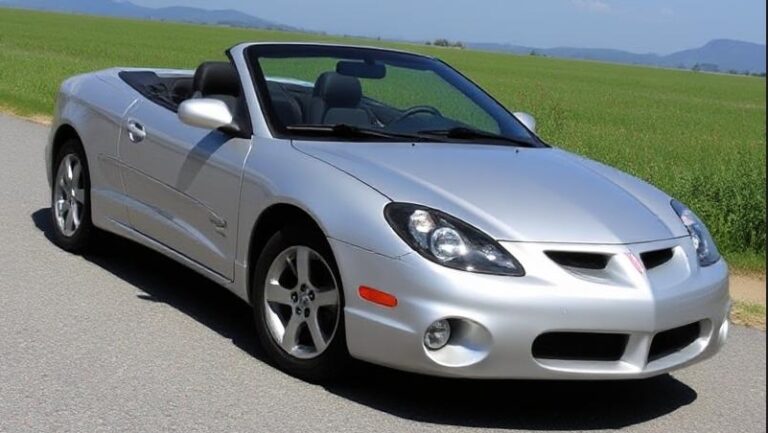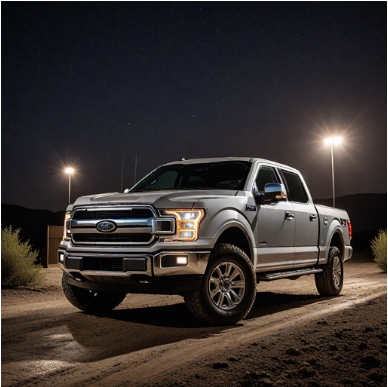The Grand Tourer Reimagined: A Deep Dive into the Evolution of the Alfa Romeo 164
The Alfa Romeo 164, a sleek and sophisticated executive sedan, holds a significant place in automotive history. Born from a collaborative effort, the “Type 4” platform, it represented a crucial shift for Alfa Romeo, embracing modern engineering and design while retaining the brand’s sporting DNA. From its unveiling in 1987 to its final production year in 1997, the 164 evolved significantly, offering a range of engines, trim levels, and technological advancements that cemented its position as a worthy competitor in the fiercely competitive European executive car market. This article delves into the evolution of the Alfa Romeo 164, exploring its development, the various models and trim levels offered, and its lasting legacy.
Genesis: The Type 4 Platform and a Collaborative Spirit
The genesis of the Alfa Romeo 164 lies in the “Type 4” platform, a groundbreaking joint venture between Alfa Romeo, Lancia, Saab, and Fiat. This ambitious project aimed to create a shared platform that could underpin a range of mid-size executive cars, optimizing costs and leveraging the collective engineering expertise of these renowned automotive manufacturers. The Type 4 platform, initially conceived in 1978, was a testament to the power of collaboration, allowing each manufacturer to develop its own unique vehicle based on a common architecture.
Each car, although sharing the same core components like the floorpan, suspension, and some mechanical elements, boasted distinct body styles, interior designs, and engine choices. This allowed each brand to maintain its individual identity while benefiting from the shared development costs. The 164 represented Alfa Romeo’s contribution to the Type 4 family, alongside the Lancia Thema, the Fiat Croma, and the Saab 9000.
The engineering of the platform was complex. The engine was mounted transversely, and the front-wheel-drive layout was a departure for Alfa Romeo, who were traditionally known for rear-wheel drive configurations. This layout was crucial for maximizing interior space, a key consideration in the executive car segment. The suspension, a MacPherson strut arrangement at the front and a torsion beam axle at the rear, was designed to provide a balance between handling and ride comfort. Disc brakes were fitted all around, ensuring effective stopping power.
Design and Development: A Pininfarina Masterpiece
While the Type 4 platform formed the foundation, the Alfa Romeo 164’s striking design was penned by the legendary Pininfarina design studio. The 164’s sleek, aerodynamic profile, characterized by its clean lines, wedge shape, and integrated bumpers, was a departure from the more angular designs of its predecessors. The design aimed to provide a low drag coefficient, contributing to improved fuel efficiency and performance.
The initial design, known as the “Project 164,” underwent several iterations before reaching its final form. Pininfarina’s design was widely praised for its elegance and modernity, successfully capturing the essence of a premium executive sedan. The distinctive sloping roofline, the integrated rear spoiler, and the refined front end, with its Alfa Romeo signature grille, all contributed to the car’s timeless appeal.
The interior, equally important to the executive car experience, was designed with a focus on comfort, ergonomics, and quality materials. Leather upholstery, wood trim, and a well-laid-out dashboard with easily accessible controls were key features. The 164 offered ample space for both front and rear passengers, further enhancing its appeal as a comfortable and luxurious long-distance cruiser.
.
The proper car suspension setup can make all the difference in the world for your vehicle!
.
Production Years and Initial Models (1987-1990)
The Alfa Romeo 164 was officially launched in 1987 and began production that same year. The initial models offered were designed to appeal to a broad range of customers, catering to various performance and price preferences.
- 164 (Base Model): This entry-level model was powered by a 2.0-liter twin-cam inline-four engine, delivering a respectable 146 horsepower. It came equipped with a comprehensive list of standard features, including power steering, power windows, and a central locking system. This model was designed to be the most affordable entry point to the 164 lineup.
- 164 Lusso: The “Lusso” (meaning “Luxury” in Italian) trim level built upon the base model, adding a range of premium features to enhance comfort and sophistication. These typically included leather upholstery, upgraded interior trim, and sometimes features like climate control and alloy wheels. The engine options remained the same as the base 164, ensuring an emphasis on luxury features.
- 164 Twin Spark: This model was a significant step up in terms of performance. It featured a 2.0-liter inline-four engine equipped with Alfa Romeo’s innovative “Twin Spark” ignition system. This system used two spark plugs per cylinder, improving combustion efficiency and boosting power to 150 horsepower. The Twin Spark was the performance-oriented four-cylinder option and a popular choice.
- 164 V6: The flagship model initially offered was the 164 V6. It was powered by a 3.0-liter V6 engine, which initially delivered 183 horsepower. This engine provided a significant increase in performance and a more refined driving experience. The V6 model was typically equipped with a higher level of standard features, including leather upholstery, alloy wheels, and a more comprehensive instrument panel. This was the top-of-the-line model for a few years.
Evolution and Enhancements (1990-1992)
As the 164 matured, Alfa Romeo introduced updates and improvements to maintain its competitiveness in the market.
- 164 Super: In 1990, Alfa Romeo introduced the “Super” trim level. This version featured several cosmetic and mechanical upgrades. These typically included revised bumpers, side skirts, a redesigned rear spoiler, and upgraded alloy wheels, giving the car a more aggressive and sporty appearance. The Super trim could be combined with several engines, including the 2.0 Twin Spark and the 3.0 V6.
- Engine Improvements: Over this period, the 3.0-liter V6 engine received several updates, resulting in an increase in power. The engine was refined and improved for fuel economy. The engine enhancements were subtle but increased power.
- Introduction of Automatic Transmission: An automatic transmission option became available on some models, expanding the appeal of the 164 to a wider audience, who prioritized comfort and ease of driving.
The Introduction of the Quadrifoglio (1990-1995)
The “Quadrifoglio” (Italian for “four-leaf clover”) models represented the pinnacle of the 164’s performance capabilities. This trim level, a tradition for Alfa Romeo’s sportiest models, was introduced to satisfy enthusiasts and to compete more effectively with other performance-oriented executive sedans.
- 164 Quadrifoglio Verde (QV): The first Quadrifoglio model was launched in 1990. It was powered by a revised 3.0-liter V6 engine, producing a potent 200 horsepower. The QV model was also equipped with a sports suspension, uprated brakes, and unique exterior styling cues, including a distinctive rear spoiler, alloy wheels, and “Quadrifoglio Verde” badges. The interior often featured sport seats and unique trim to emphasize its performance focus. The QV represented the ultimate performance-oriented model.
Further Refinements and Special Editions (1992-1997)
The final years of the 164 saw further refinements and the introduction of special editions to keep the car attractive.
- Revised Styling: The 164 received a facelift in 1992. The most noticeable changes were to the front and rear fascias, featuring new headlights, taillights, and bumpers. The interior was also updated with improved materials and a revised dashboard design. These changes modernized the look of the 164 and further refined its appeal.
- 164 2.0 Turbo: This model, introduced in some markets, was equipped with a 2.0-liter turbocharged inline-four engine. This engine, capable of producing around 200 horsepower, offered a compelling blend of performance and efficiency.
- 164 V6 24V: The 3.0-liter V6 engine underwent a significant upgrade, receiving a 24-valve cylinder head (four valves per cylinder), which increased power output to around 210 horsepower. This 24V engine was a highlight of the later production years.
- Quadrifoglio 12V: The Quadrifoglio (QV) models continued to evolve, receiving the 12-valve engine and further suspension tweaks.
- Special Editions: Several special edition models were introduced, often with unique paint colors, interior trim, and equipment packages. These editions often featured a combination of performance and luxury upgrades, such as special alloy wheels, leather upholstery, and premium sound systems. Examples include the “Progetto 164” and “Personal” editions in some markets.
End of Production and Legacy
Production of the Alfa Romeo 164 ceased in 1997, marking the end of a successful but challenging chapter for the brand. The 164 had faced strong competition from established players in the executive car segment. While it was praised for its design, performance, and unique character, it also faced criticism regarding reliability, a persistent concern for Alfa Romeo during that era.
Despite these challenges, the Alfa Romeo 164 left a lasting legacy. It was a significant car for Alfa Romeo, demonstrating the brand’s ability to compete in the executive car market. The 164 was also the last Alfa Romeo designed in collaboration with Pininfarina. The car’s elegant design, distinctive engine choices, and sporting DNA made it a desirable and memorable car for enthusiasts. Its contribution to the Type 4 platform also helped to foster important collaborations within the automotive industry.
The Alfa Romeo 164 remains a sought-after classic car, appreciated for its design, performance, and historical significance. It represents a time when Alfa Romeo pushed boundaries and strived to create a truly unique and engaging driving experience. The 164 serves as a testament to the brand’s ability to create stylish, sporty, and luxurious vehicles.
